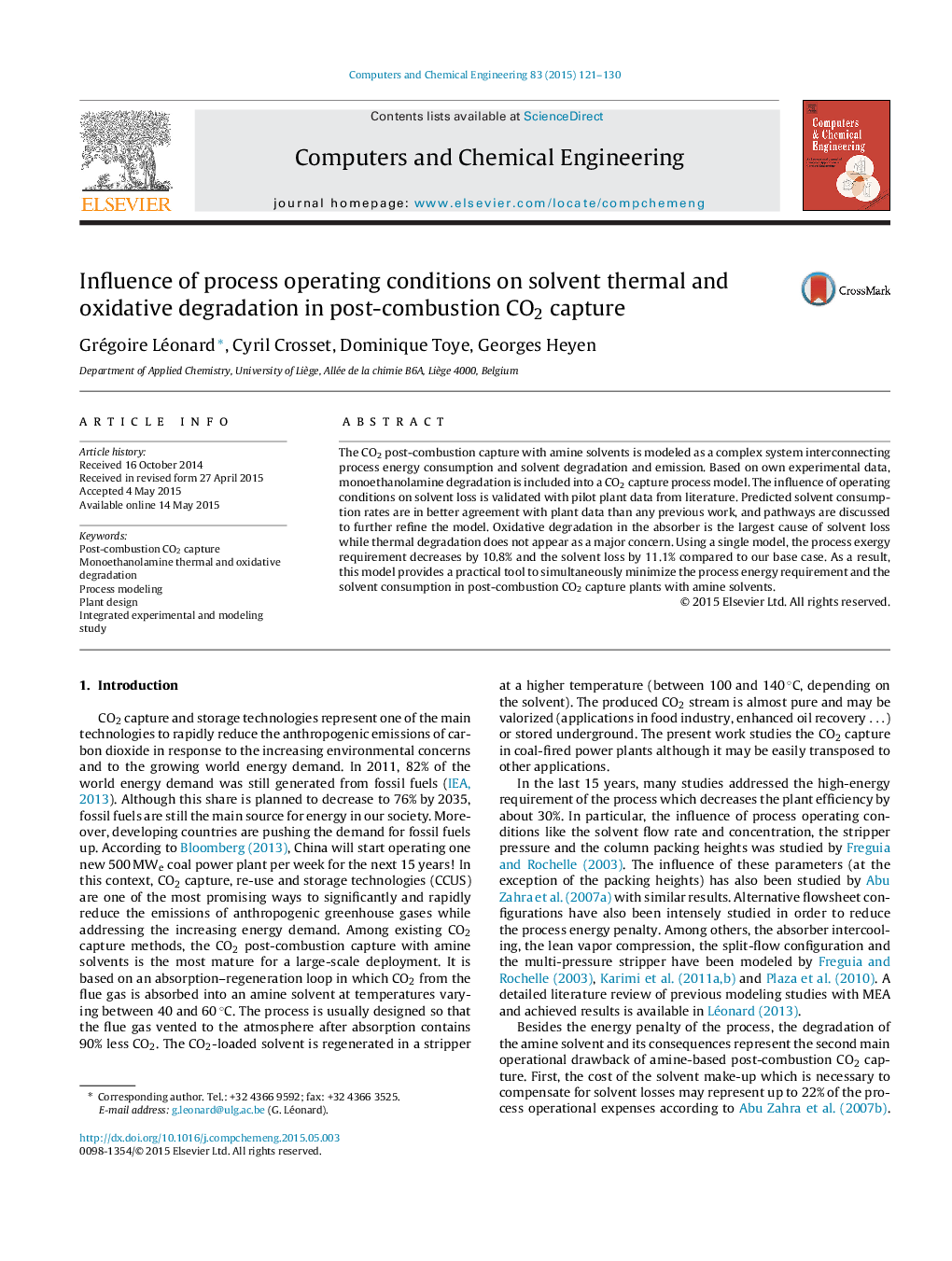| Article ID | Journal | Published Year | Pages | File Type |
|---|---|---|---|---|
| 172164 | Computers & Chemical Engineering | 2015 | 10 Pages |
•Solvent degradation reactions are included into a global model of CO2 capture.•The model predicts same order of magnitude solvent loss compared to pilot plants.•The influence of process operating parameters on degradation is quantified.•Both energy requirement and solvent degradation are assessed using a single tool.•Optimal operating conditions including flowsheet improvements are proposed.
The CO2 post-combustion capture with amine solvents is modeled as a complex system interconnecting process energy consumption and solvent degradation and emission. Based on own experimental data, monoethanolamine degradation is included into a CO2 capture process model. The influence of operating conditions on solvent loss is validated with pilot plant data from literature. Predicted solvent consumption rates are in better agreement with plant data than any previous work, and pathways are discussed to further refine the model. Oxidative degradation in the absorber is the largest cause of solvent loss while thermal degradation does not appear as a major concern. Using a single model, the process exergy requirement decreases by 10.8% and the solvent loss by 11.1% compared to our base case. As a result, this model provides a practical tool to simultaneously minimize the process energy requirement and the solvent consumption in post-combustion CO2 capture plants with amine solvents.
